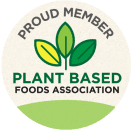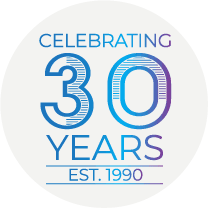Food Safety Is Still An Issue For The Food Industry

Amid the recent wave of numerous food recalls and the concerning reports of pathogen contamination across a wide range of food products, it's no surprise that American consumers' trust in the safety of the food supply is eroding. According to the 2024 IFIC Food & Health Survey, confidence has hit its lowest point in a decade, with only 62% of consumers feeling confident, compared to 70% in 2022. Key concerns include carcinogens in food, foodborne illnesses caused by bacteria, and pesticide use. Microbial issues are a major concern, with 32% of respondents expressing extreme worry about the presence of E. coli in ground beef.
According to the U.S. Department of Health and Human Services, each year 1 in 6 Americans get sick from contaminated food or beverage products and 3,000 die from foodborne illness. Additionally, the US Department of Agriculture (USDA) estimates that foodborne illnesses cost more than $15.6 billion each year.
Food and consumer safety are of the highest importance to the US government. In 2019, the government passed The Food Safety Modernization Act (FSMA), giving the FDA the power to regulate how food is grown, harvested, and processed. The Act provides guidelines on food safety and quality for food manufacturers and producers to prevent foodborne illnesses rather than respond to them.
In addition, food recalls are highly detrimental to manufacturers. Product recalls affect brand and product image, brand equity and potentially have a long-term effect on the company's reputation and consumer's trust in the company's products. It can break the trust a customer has in purchasing from that company, which can harm sales of current products and can negatively affect any future product launches.
Four Ways A Product Recall Can Affect a Company:
- Incur costs associated with the food recall
- Incur expenses related to customer reimbursement
- Damaging effect on the company's reputation and brand equity
- A potential decline in future sales as a result of reputation damage
Considering the damaging effects foodborne illnesses have on public health and the adverse outcomes of food recall for food companies, it is easy to understand why food safety and food protection should be a top priority to food manufacturers.
Despite the advances in safety measures and preventative controls in the food manufacturing and supply chain, we are still witnessing food recalls due to pathogenic contamination. Over the past several years, there has been an increased focus on health and wellness and food safety. Recent research has indicated that the COVID-19 pandemic has further solidified the consumer focus on their health and well-being, which directly affects their purchase intentions and eating choices. Consumers desire minimally processed, clean-label, wholesome foods that are safe to eat and good for their health.
The food and beverage industry continues to seek ingredient solutions and new technologies to offer adequate food protection and safety to consumers while meeting the clean label requirements.
"Food recalls due to foodborne illness are dangerous for the consumer and costly for the food companies. They can be prevented. Many companies resort to hurdle technology to combat food pathogens and keep products safe," - says Gil Bakal, Managing Director at A&B Ingredients.
The Use of Hurdle Technology To Ensure Food Safety
The hurdle technology is a method of ensuring the safety of foods. It involves a number of milder preservation factors to control the growth of pathogens, making the food safe for consumption and extending its shelf life.
Hurdle technology is not a new concept. Manufacturers and formulators have to consider pH, water activity, cooking, freezing, and the use of preservatives as part of the hurdle process. Each one of these factors can be used individually or in combination to control the safety of the food products.
A&B Ingredients manufactures CytoGUARD Lauric Arginate, a broad-spectrum antimicrobial. It is an important hurdle step in the control of pathogens in ready-to-eat and fresh meat, seafood, and poultry. It also has potential when used as a surface treatment on vegetables and fruit. "Lauric Arginate is a cationic surfactant and when used as a surface treatment can provide an initial 'kill step'. Some may consider LAE to be similar to 'cold pasteurization', where it has the potential to produce 2 to 3 Log reduction of microbial load including pathogens such as Listeria, E. coli, and Salmonella," explains Joe O'Neill, VP of Sales and Business Development at A&B Ingredients.
Recent findings have indicated that cells not killed by Lauric Arginate, are damaged and more susceptible to other inhibitors or preservatives. These damaged cells were also vulnerable to a physical, deep freeze treatment. One meat study referenced the benefit of multiple hurdles by using CytoGUARD Lauric Arginate with a bacteriostatic agent followed by a freezing step prior to refrigeration. The cells never recovered. The final benefit was the initial reduction in bacterial load (including Listeria) followed by an extended inhibition of microbial growth, which resulted in an extended shelf life of up to 90 days.
Using Bactericidal and Bacteriostatic In Pathogen Control
A&B Ingredients has been advocating the use of a bactericidal and bacteriostatic hurdle technology to address the safety, quality, and freshness of foods. "This specialty ingredient combination is a proven hurdle technology. It has been widely adopted and used as a surface treatment in hot dogs and meats, fish and poultry, to control pathogens such as Salmonella, Listeria and E. coli as well as spoilage organisms," says O'Neill. "This technology is a useful intervention in the control of pathogens in various food applications to protect the consumer. Scientists also have demonstrated that Lauric Arginate shows promise for use in dairy applications, like cheese, to control the growth of Listeria monocytogenes and keep the food products safe for consumption."
"Our CytoGUARD portfolio offers a measure of food safety and protection and helps keep foods safe and fresh," explains O'Neill.
CytoGUARD LA Is an Effective Solution For Pathogenic Control In Foods
CytoGUARD Lauric Arginate (LAE) is a cationic surfactant and is highly effective at reducing pathogenic and spoilage organisms in food by disrupting the cell membrane structure of pathogenic bacteria. It is a broad-spectrum, food-grade antimicrobial.
CytoGUARD LA is often used in combination with bacteriostatic agents and other microbial inhibitors. This combination effectively extends the shelf life, food safety, and freshness of the foods.
LAE is a cost-effective food safety solution. It can be used at very low use levels and is effective between 50 to 200 ppm. Most importantly, it does not affect the organoleptic properties of food, flavor, or taste.
The food industry is still facing challenges with food safety throughout the manufacturing and supply chain. A&B Ingredients offers clean label solutions from nature to address food safety, food spoilage, and quality issues naturally.
Contact us to learn more about our comprehensive range of food quality and food protection solutions.
How Can We Help?
We are here to help you with development of new and improved food products. Our technical service and sales teams can assist you in choosing the right ingredients best suited for your applications.
Product CatalogContact Us
